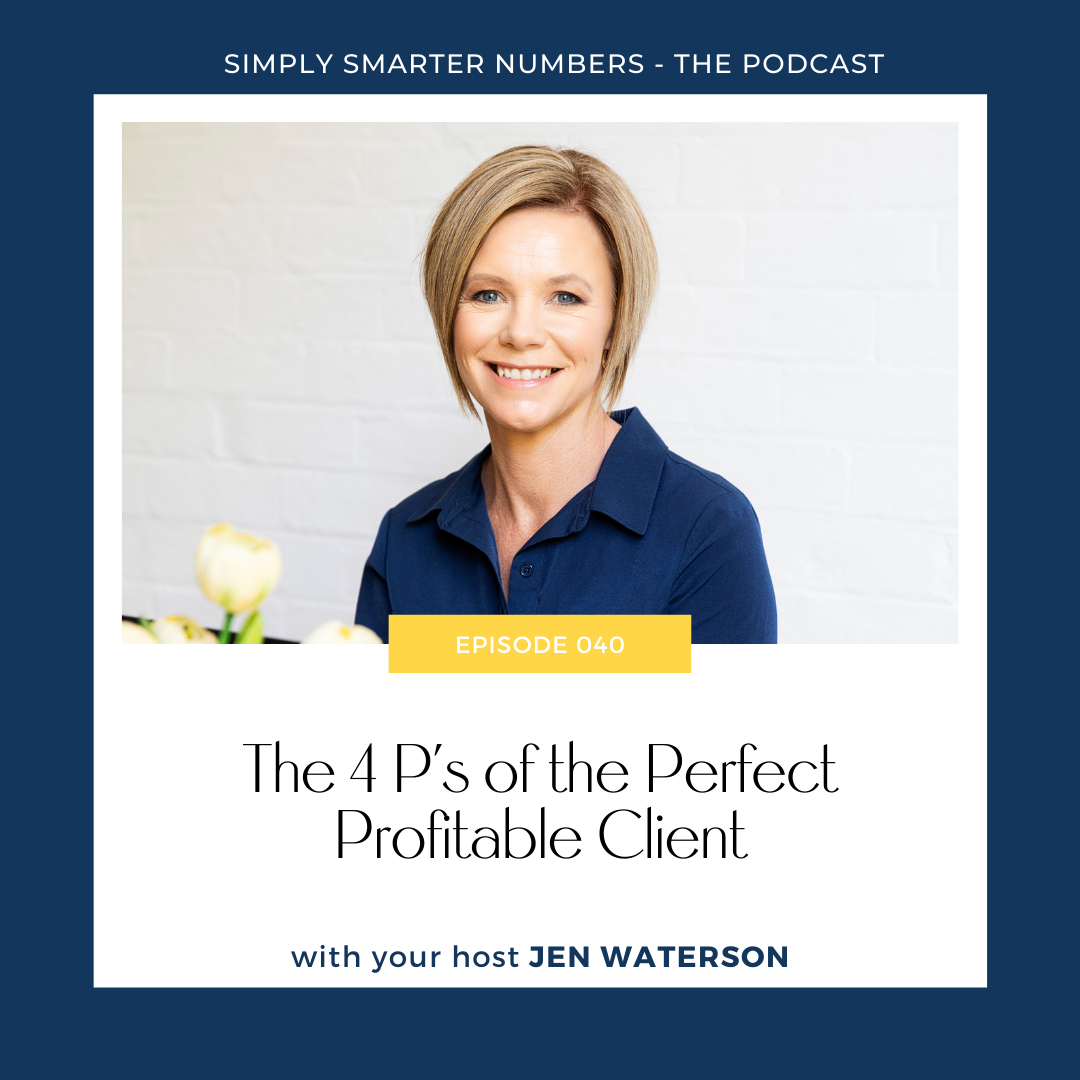
Here’s what we’ll cover
Today’s podcast is going to be short and sharp but sweet. Short and sharp because I want to keep the point super clear and sweet because when you nail this sweet spot in your business life begins to get a whole lot easier.
I want to talk to you about your perfect profitable client. Who they are, what they look like and how you’ll know.
But before we get into the details, why do you need to know what your perfect profitable client looks like?
Because they are the one who will help you build the most elegant version of your business. And if you need a reminder as to what I refer to when I talk about the most elegant version of your business – it’s a business that’s lifestyle friendly. It’s profitable enough to financially support your lifestyle goals but it’s also structured in a way to support your freedom goals.
Knowing and finding your perfect client is one step to building yourself this elegant business.
Links and Resources
- Checkout the Simply Smarter Numbers website HERE
- Checkout the Podcast HERE
- Checkout the Instagram page HERE
Keep Listening!
Here’s the shownotes
Today’s podcast is going to be short and sharp but sweet. Short and sharp because I want to keep the point super clear and sweet because when you nail this sweet spot in your business life begins to get a whole lot easier.
I want to talk to you about your perfect client. Who they are, what they look like and how you’ll know.
But before we get into the details, why do you need to know what your perfect client looks like?
Because they are the one who will help you build the most elegant version of your business. And if you need a reminder as to what I refer to when I talk about the most elegant version of your business – it’s a business that’s lifestyle friendly. It’s profitable enough to financially support your lifestyle goals but it’s also structured in a way to support your freedom goals.
Knowing and finding your perfect client is one step to building yourself this elegant business.
The perfect client makes it easier to price well, they are easier to sell too and to even re-sell too. You enjoy working with them and they pay their bills – upfront preferably.
It’s one thing to know who this perfect client is and it’s another thing altogether to find them.
First, let’s talk about identifying this perfect client. I want to say straight up this isn’t a niching conversation. Niching is for some but not for others. We often think industry specific details when we talk about niching. For example, I could nich my business down to work with a specific industry ie female lawyers or female graphic designers or dieticians, but I just don’t want to work with one type of business in one type of industry.
I want to work with busy business women who want to build a more elegant business model. My niche, if we have to use that term, is the problem – the problem for these women is the fact that they have grown a business that is not serving their lifestyle, that is the problem. The solution is to help them build a more elegant business.
Now, getting back identifying this perfect client. I’m going to give you a set of steps that I’ve used in the past. And if you’re having trouble with things such as saying no to certain work or pricing certain work I’d recommend using this process before committing to the job and before committing to the price.
For every existing or new client or lead that comes your way, run them through a short pre-qualification before committing to doing the work and before setting the price. What you are going to do is take a step back from your usual process, your everyday and assess this existing client or new lead for their level of ‘perfectness’.
On a scale of 1 to 5 with 5 being perfect, measure each existing client or new lead based on the 4 P’s below;
- Precise Problem
- Payment Ability
- Potential Scope
- Personality
So 1 – Precise Problem. On a scale of 1 to 5 What you want to offer and what you enjoy delivering is the precise problem of the client or lead. So your precise offer is the perfect solution to that client or new lead’s precise problem.
If you ‘want’ to sell graphic design and you ‘can’ build websites, don’t take on the client that only wants the new website. Recommend them to someone else and find the business that wants what you have to sell – the graphic design.
Does this client or new lead want and need your solution to their precise problem? If it’s a hell yes then give them a score of 5 on this scale.
Sure you’ll need to take the odd website build if cash is short or as you’re growing your business to make ends meet but think before you accept the work.
- Payment Ability. On a scale of 1 to 5 Are they in an industry or position in their business to make enough money to pay you what you want?
A start-up vs an established business or an industry known for low profits or poor cashflow.
- Potential Scope. On a scale of 1 to 5 Does the client offer you potential scope for upselling, reselling, referrals or ongoing work?
- Personality. On a scale of 1 to 5 Does this client have the character, personality, ambition and drive to make the project easy and enjoyable to fulfil?
Any client that doesn’t meet pre-determined deadlines, or drip feeds you with information or is just damn painful to work with should go on the lower end of this scale.
Start considering each and every client engagement with this in mind and you’ll notice the shift in the types of clients you attract, the types you end up working with and the amount you get paid for doing the work.



